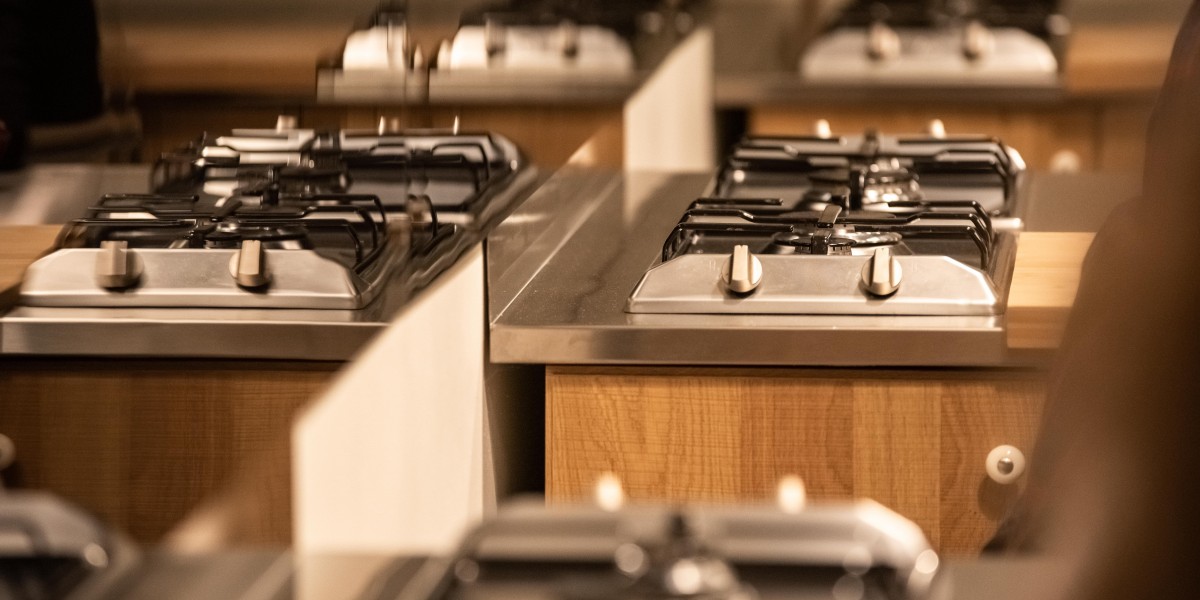Fitted Ovens and Hobs: An In-Depth Guide to Modern Cooking Appliances
Fitted ovens and hobs have become a staple in modern-day kitchens, integrating performance, looks, and innovative innovation. These kitchen appliances are designed to perfectly integrate into kitchen surfaces, providing the culinary enthusiast with the tools required for effective meal preparation while keeping a smooth and orderly look. In this short article, we will check out the different types of fitted ovens and hobs, their benefits, elements to consider when picking them, and answers to frequently asked concerns.
Comprehending Fitted Ovens and Hobs
Fitted bulit-in ovens and hobs are appliances particularly created to be built into kitchen cabinets or countertops for a smooth look. They can vary substantially in design, size, performance, and features, which cater to varied cooking needs and kitchen styles.

Types of Fitted Ovens
- Built-in Ovens: These ovens are set up straight into a wall or kitchen system and come in numerous configurations and sizes.
- Double Ovens: A built-in variation that consists of 2 different oven compartments, permitting numerous meals to be prepared at differing temperature levels at the same time.
- Mix integrated ovens and hobs: These flexible appliances combine standard baking with microwave innovation.
- Steam Ovens: Ovens that utilize steam for cooking, maintaining moisture in food while enhancing tastes and nutrients.
- Single Ovens: A basic oven system that is the most common type used in homes.
Kinds of Hobs
- Gas Hobs: These utilize gas burners for cooking, providing instant heat and precise temperature level control.
- Electric Hobs: Powered by electricity, these hobs often feature smooth surfaces that make them easy to tidy.
- Induction Hobs: Utilizing electro-magnetic energy, induction hobs heat cookware straight rather than the hob surface area, making them energy effective and a safe choice.
- Blended Hobs: These offer both gas and Cookology COF600BK 60Cm Black Electric Oven - Buy Now! options, providing flexibility for cooking designs.
Advantages of Fitted Ovens and Hobs
Fitted ovens and hobs offer many benefits that improve the cooking experience:
- Space Efficiency: Designed to fit into cabinetry, fitted appliances take up less space compared to standalone designs, developing a structured kitchen layout.
- Aesthetics: Fitted designs frequently develop a more cohesive and aesthetically appealing kitchen design.
- Customization: Homeowners can choose from a range of styles, finishes, and features to match their kitchen decoration and cooking needs.
- Boosted Functionality: Many contemporary fitted ovens and hobs boast innovative innovation, such as clever controls, self-cleaning functions, and precise temperature level settings, which simplify cooking.
- Safety Features: Many hobs, specifically induction models, have security features such as car shut-off and child locks, promoting a more secure cooking environment.
Elements to Consider When Choosing Fitted Ovens and Hobs
When selecting fitted appliances for a kitchen, a number of aspects must be considered to guarantee the best option:
- Cooking Style: Different appliances accommodate various cooking practices. Home cooks should assess their typical meal preparation methods to find ideal appliances.
- Area and Layout: Measure the offered space in the kitchen to make sure that the chosen appliances fit nicely without preventing motion.
- Energy Efficiency: Choose appliances with energy-efficient ratings to minimize energy costs and ecological effect.
- Technology and Features: Consider the preferred functions, such as clever innovation, self-cleaning modes, or specific cooking functions like steam or convection cooking.
- Budget plan: Determine a budget plan before making selections to ensure that the picked designs line up with monetary planning.
Table: Comparison of Different Types of Ovens and Hobs
| Device Type | Pros | Cons |
|---|---|---|
| Built-in Ovens | Space-saving, personalized design | Installation cost can be high |
| Double Ovens | Prepare multiple dishes at various temperatures | Takes up more area |
| Steam Ovens | Healthy cooking, keeps nutrients | Generally greater expense |
| Gas Hobs | Quick heat control, chosen by chefs | Requires a gas line installation |
| Induction Hobs | Quick cooking, energy-efficient, safe | Needs suitable pots and pans |
| Electric Hobs | Easy to clean, stable cooking temperatures | Heating times can be slower |
Often Asked Questions (FAQs)
1. What is the difference between a built-in oven and a freestanding oven?
A built-in oven is integrated hob and oven into kitchen cabinetry for a smooth look, while a freestanding oven stands alone and is often more noticeable and available.
2. Are induction hobs safe to utilize?
Yes, induction hobs are considered safe as they just produce heat when compatible pots and pans is placed on them, reducing the danger of burns.
3. Can I set up a fitted oven myself?
While some individuals may select to set up fitted ovens themselves, it is normally suggested to employ an expert to ensure right installation and adherence to safety requirements.
4. What size of oven is ideal for a little kitchen?
In small cooking areas, consider compact or single built-in ovens that fit within the offered space without jeopardizing on cooking functionality.

5. Do fitted ovens and hobs need unique maintenance?
Fitted appliances need basic upkeep, such as cleansing and periodic checks. Nevertheless, particular upkeep tasks depend on the kind of oven or hob.
In conclusion, fitted ovens and hobs represent the embodiment of modern kitchen design and performance. By understanding their types, benefits, and considerations, consumers can make informed choices that improve their cooking experiences while fitting perfectly into their home. Whether developing premium meals or preparing household suppers, fitted ovens and hobs are valuable tools in any cooking space.







